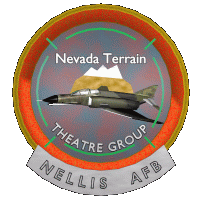
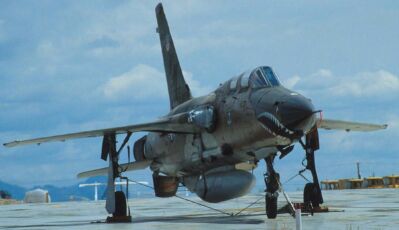
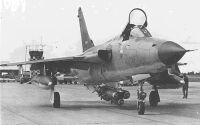
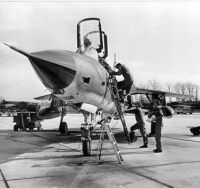
The F-105D could carry over 12,000 pounds of ordnance, a heavier bomb load than a
World War II B-17. Up to 8,000 pounds could be carried internally in the bomb bay. The F105D was used extensively in the Vietnam War. It flew 75 percent of the air strikes against North Vietnam during its first four years. The last F-105D was withdrawn from USAF service on July 12, 1980.
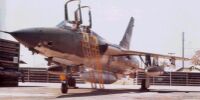

YF-105A
F-105B
JF-105B
F-105C
F-105D
F-105E
F-105F
F-105G
2
75
3
0
610
0
143
55 (cv)
Prototype
10 pre-prod & 65 prod. A/C
initially RF version
Two-seat trnr.; canceled
Imp. -B; All-weather strike
ftr.
Two-seat -D model; canceled
Two-seat trnr./ftr-bomber
Wild Weasel conv. -F model
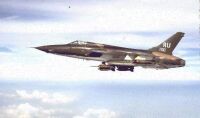
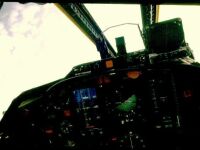
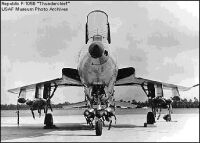
Originally designed to deliver nuclear weapons at supersonic speeds, the F-105 Thundercheif, like the B-52, was pressed into service delivering iron bombs to North Vietnam. In this role the F-105 excelled and by the end of 1970 the F-105 had flown 75% of the bombing missions to North Vietnam.
The F-105 was a huge aircraft. It's physical size coupled with its single-engine design led its early pilots to nickname it the "Thud", after the sound it would likely make when it crashed to earth. These same pilots, however, learned that the "Thud" could get them home even after sustaining considerable damage while flying over the most heavily defended targets ever encountered.
Known as "the Thud", this greatest of all single-engine combat jets bore a huge burden
throughout the Vietnam War, and was a deadly and effective tactical fighter-bomber. A
supersonic jet, the Thud is characterized by two unique systems: it is the only jet fighter to refuel from a side-fuselage boom, and was the first jet fighter to employ a Vulcan 20mm "Gatling Gun" cannon. The D-model made more air strikes against North Vietnam than any other US aircraft, and also suffered more losses. During the war, the versatile Thud was also credited with 25 MiG kills.
The F-105 evolved from a project begun in 1951 by Republic Aviation at Farmingdale NY to develop a supersonic tactical fighter-bomber to replace the F-84F. The massive F-105 was intended primarily for nuclear strike missions. The prototype first flew on October 22, 1955, but the first production aircraft, an F-105B, was not delivered to the USAF until 1958. With the designation F-105B came an engine change to a Pratt & Whitney J75-P-3. Other changes were made in this model too, including the use of a unique type of swept forward air intake to control the shock-wave and introduction of ��area rule�� on the fuselage. A total of 75 F-105Bs were built.
The F-105D all-weather strike fighter and the two-place F-105F dual-purpose trainer-fighter were also built before F-105 production (833 aircraft) ended in 1964. No "C" or "E" series were produced and "Gs" were modified "Fs" outfitted with extensive electronic countermeasure equipment. F-105G aircraft were nicknamed "Wild Weasels" and specialized in jamming enemy radar and destroying surface-to-air missile sites.


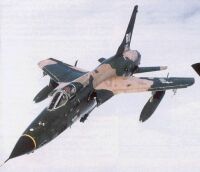
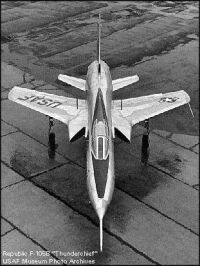
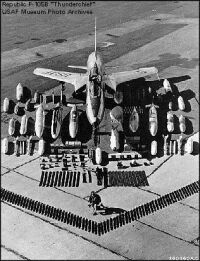

Length
Height
Weight
Armament
Engine
Cost
Maximum speed
Cruising speed
Range
Service Ceiling
67 feet 5 inches
19 feet 8 inches
52,838 lbs.
One M61 20mm Vulcan cannon plus 14,000 lbs. of ordinance including conventional bombs, rocket packs, missiles, and internally or externally carried special weapons.
One Pratt & Whitney J75 jet engine with 26,500 lbs. of thrust
$2,136,668
1390 mph
778 mph
2,206 miles
51,000 feet